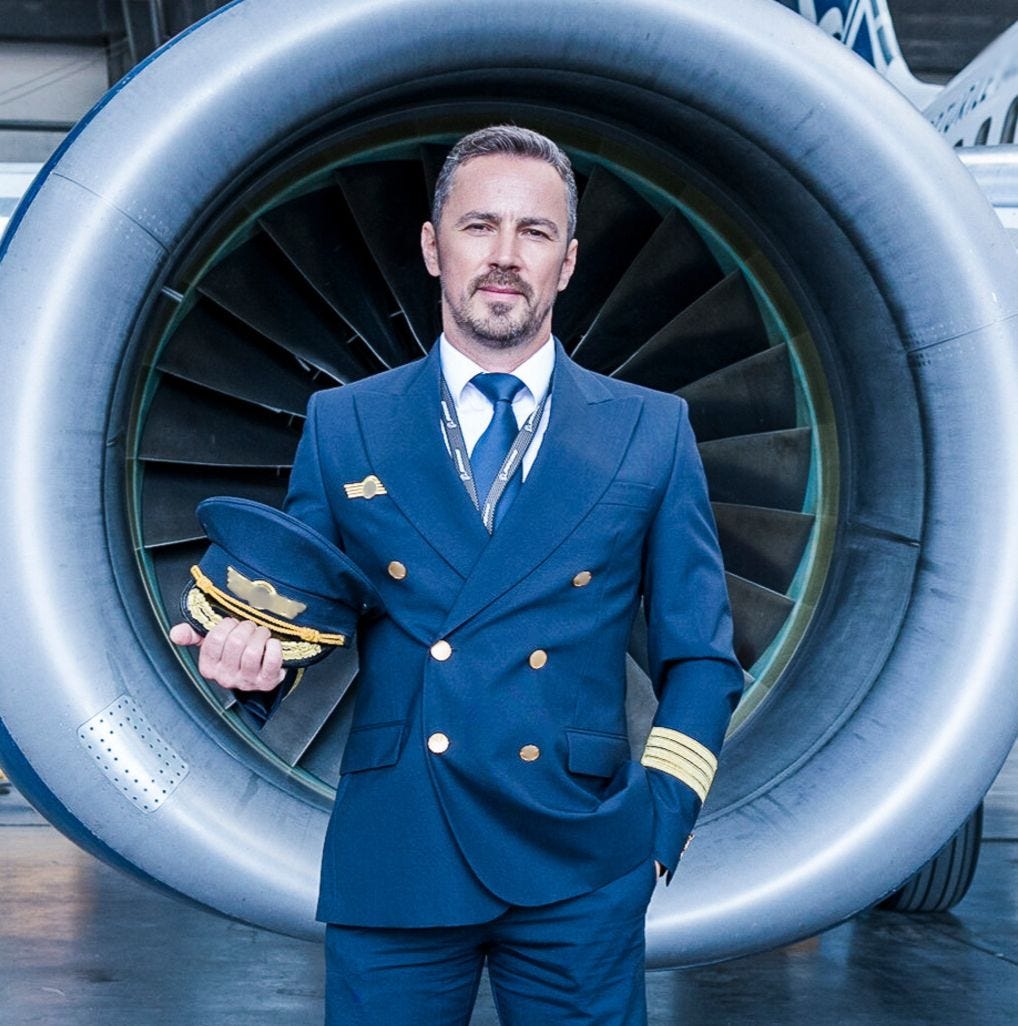
According to statistics from the Bureau of Aircraft Accidents Archives, the total number of aviation accidents recorded stands at 34,882. Many of these incidents have resulted in devastating consequences, including a staggering total of 174,903 fatalities. The Tenerife airport disaster claimed 583 lives after the captain of a KLM Boeing commenced take-off without ensuring the runway was clear, resulting in a collision with a taxiing Pan Am aircraft. Similarly, American Airlines Flight 587 crashed due to the first officer's excessive use of the rudder during turbulence, leading to 265 fatalities and becoming the second-deadliest aircraft accident in the history of the United States. In 2022, China Eastern Airlines Flight 5735 crashed, killing all 132 passengers and crew on board. This tragedy was attributed to the pilots' failure to address an unexpected tailplane malfunction. In 2024 alone, there have been over 15 incidents involving commercial aircraft, including several that resulted in fatalities. Alarmingly, around 80% of all these accidents have been caused by human error.
Flight simulators specifically designed to allow pilots to practice handling non-standard, error-inducing, and stressful conditions have become a mandatory component of training. Additionally, some of the largest aviation companies have begun actively involving psychologists in the development of new training programs which targeted information management, decision-making, communication and leadership. While this approach has made significant contributions to safety, in the beginning it was met with resistance from flight crews. They felt it was excessively focused on psychology and argued that psychologists often lack an understanding of the technical demands and nuances of handling system failures and aviation threats in general.
To shed light on the intricate intersection of aviation's technical and mental demands and to explore the ideal combination of pilot training frameworks, we interviewed Silviu Savoaia, a leading expert in aviation psychology, accomplished pilot, and author of published research on the impact of psychological advancements on flight crew performance. In addition to his extensive experience in commercial aviation --- ranging from piloting small airplanes to operating ultra-long transoceanic flights to destinations around the globe --- Savoaia collaborated with the U.S. military as a pilot, transporting troops and equipment to and from operational theaters worldwide, including delivering war supplies to Ukraine. He is now advocating for a shift in pilot training toward a behavior-based approach which focuses mainly on developing and reinforcing safe behaviors on the flight deck. This innovative method uses short, targeted simulations focusing on specific scenarios and behaviors as a mandatory part of pilot training to instill safety-oriented habits. These habits are further supported through positive reinforcement which is key to making "anti-error behaviors" part of the crew's routine.
Remarkably, Savoaia's professional journey began with advanced degrees in psychosociology and management, followed by pilot training, and evolved into an over 16 years-long pilot's career. Rising to the rank of Captain on the Boeing 737 and Boeing 777, he also developed his own pilot training program that integrates traditional technical training with innovative psychological methodologies. Today, he actively collaborates with aviation journals, sharing his insights on the practical application and potential optimization of models such as Crew Resource Management, Threat and Error Management, and Applied Behavior Analysis in modern aviation.
"Beyond technical expertise, pilots increasingly need to rely on psychological insights to navigate the cognitive and emotional demands of their role," comments Savoaia. "In an environment where even a minor mistake by a fatigued, stressed, or distracted crew member can lead to catastrophic consequences, it is crucial to ensure that habits such as effective stress management, maintaining focus during automation-dominated operations, and fostering collaborative teamwork and communication are deeply ingrained in every pilot's subconscious --- so much so that they become second nature."
"One of the biggest challenges facing today's aviation industry is the alarmingly increasing rate of mental health challenges among pilots, including burnout, depression, family problems, fatigue." adds Savoaia. "Flying a plane is an incredibly stressful and demanding job. Excessive work hours, irregular schedules, and the immense responsibility for passenger safety can all become overwhelming. Pilots work in confined spaces with limited opportunities for movement, spend long periods isolated from their families and friends, and endure irregular working hours that disrupt their sleep patterns. These factors place flight crew members in a high-risk group for developing burnout, anxiety, and depression. At the same time, despite all the resources the industry is offering to address these issues, many pilots distrust the confidentiality of the system, fearing that seeking help could jeopardize their medical certification and careers. This widespread culture of silence among pilots represents a systemic threat to aviation safety and needs to be addressed using more psychological insight then what is currently applied to understand and overcome the barriers that prevent pilots from speaking up. In such a high-pressure fast-paced environment like aviation, mental health issues that are not addressed can lead to reduced situational awareness, bad decision-making, slower reactions, communication breakdowns, inability to cope with emergencies and, in general, an increased risk of errors."
"Behind every accident is an incident caused by a series of errors, which, in turn, stem from a pattern of at-risk behaviors occurring before things went wrong. The main issue with many safety programs is that they tend to focus on the accidents, incidents, and errors of a specific case while overlooking the root cause: unsafe behaviors that may have been practiced by crew members for some time before a combination of internal and external circumstances made them catastrophic. To effect meaningful and lasting improvements in aviation safety, it is crucial to teach future pilots to identify and control these at-risk behaviors early, before they have the chance to snowball into serious problems."
"It is vitally important to get pilots accustomed to emergencies during their training," emphasizes Savoaia. "One of the primary reasons aviation incidents escalate into fatal accidents is the lack of effective psychological preparation for such situations. Life-threatening issues like engine failure, fire, or extreme weather --- challenges that demand extraordinary effort to land a plane safely --- are rare. A pilot may serve for many years, having to handle only minor, predictable issues that are relatively easy to control, excelling in every aspect, until an emergency occurs. Such a situation tests not only the pilot's technical proficiency but also his ability to remain fully focused and composed, maintain a broad perspective, ensure seamless coordination and communication, and make informed, calculated decisions sometimes within seconds under life-threatening circumstances."
"Many people would argue that emergency management is part of the job, which must be tested before entrusting a pilot with safety of passengers, and they would be right," Savoaia expands. "However, there is a significant difference between demonstrating this ability during a simulator checkride and managing an actual real-life emergency. From a psychological perspective, when faced with a high-stress situation, the human brain tends to narrow its attention, often overlooking critical factors and losing the bigger picture. Pieces of information that, if connected, could lead to a life-saving solution may go unnoticed. Even a seemingly minor detail, if missed, can prove fatal. As a result, even the most talented pilot, capable of handling extreme technical challenges, might fail if they are not psychologically prepared for the sudden and unpredictable materialization of a distress situation."
"This is why we need training programs that take all aspects of human psychology into account," states Savoaia. "Frameworks developed in collaboration with psychologists, such as Crew Resource Management (CRM) and Threat and Error Management (TEM), are central to managing human factors in aviation. These frameworks equip pilots with tools to identify and mitigate threats and errors, ensuring safe outcomes during non-normal situations. However, there are many crucial nuances to making such training programs as effective as possible, which are often overlooked. Training, for instance, must be frequent and recurrent; otherwise, the skills it develops may deteriorate over time. Furthermore, the training should include a diverse range of scenarios tailored to various circumstances, ensuring both the development and reinforcement of a pilot's coordinative and cognitive abilities. This enables pilots to handle routine operations as well as unforeseen situations, including non-normal situations and emergencies."
"It is also essential to train pilots in effective decision-making, communication, coordination, situational awareness, mission analysis, and adaptability under the stress of emergency situations to address the root causes of aviation accident risks," continues Savoaia. "Situational framing methods, specially developed to enable crew members to understand and process critical information and coordinate their actions during crises, need to become ingrained habits rather than conscious choices. This way, even if the intensity of a sudden emergency significantly heightens a pilot's stress level, they can still follow procedures, evaluate possible solutions, lead effectively, communicate clearly, and take the right actions effortlessly."
"In Line-Oriented Flight Training (LOFT) scenarios that simulate emergencies in a controlled environment, crews practice CRM skills, such as communication and decision-making, in realistic settings," explains Savoaia. "Simultaneously, TEM techniques teach them to systematically identify and mitigate risks. At the same time, Applied Behavior Analysis (ABA) principles should be incorporated to reinforce desired behaviors and make them part of the crew's routine. This integration creates a comprehensive, psychologically informed approach to training that fosters behavioral fluency --- the ability to perform safety behaviors instinctively, even under stress."
"For example, when the captain and first officer face an unidentified threat, it is crucial to adhere to their prescribed roles: the captain should focus on creating and maintaining the bigger picture by addressing the non-normal situation and working toward resolving the issue, while the first officer should concentrate on keeping the plane under control, navigating and communicating with air traffic control and other relevant parties", expands Savoaia. "Effective communication between all parties involved --- crew members, air traffic control, dispatch etc, is critical to ensure that no important information is overlooked."
"There are many other habits that need to be automated during training and consistently practiced on every flight to maximize the chances of effectively handling an emergency situation," continues Savoaia. "For example, it is crucial to teach future pilots never to neglect the routine of meticulously going through checklists and holding departure and arrival briefings to identify and discuss any potential difficulties, threats, or specific aspects of the flight, no matter how common or obvious they may seem. Some pilots, with the best intentions of saving time --- especially when running behind schedule --- may be tempted to skip parts of these routines, considering the repetitive procedures unnecessary. However, this seemingly simple habit can save the lives of the crew and passengers during an unforeseen emergency. Unless it is practiced regularly during routine flights, there is little chance a pilot will suddenly decide to follow it on the day an emergency occurs."
"Thus, one of the key changes I would bring to the current Threat and Error Management system is shifting the focus from simply reacting to errors to proactively addressing the behaviors that cause them in the first place," summarizes Savoaia. "While the current system does a good job of identifying and managing errors after they have a history of occurring --- through avoidance, trapping, and mitigation --- it often overlooks the motivation for the at-risk behaviors that lead to those errors. My approach is to target these behaviors earlier to prevent errors before they ever happen."
"If we examine aviation safety, errors like skipping checklists, communication breakdowns, or proficiency lapses don't simply 'happen' ", concludes Savoaia. "They are often reinforced by the operational environment. The consequences of our actions control our behavior --- they act as reinforcers. A strong reinforcer is positive, immediate and certain. When such a reinforcer follows a behavior, it can maintain or even increase the frequency of that behavior. But in our environment many consequences are negative, delayed, or uncertain. Negative consequences can punish appropriate behavior, delayed positive consequences may inadvertently reinforce an inappropriate behavior that occurs in between the appropriate behavior and the delayed consequence. And uncertain positive consequences may not occur frequently enough to influence behavior effectively.
For example, a crew might skip reading a checklist because it feels faster or more efficient in the moment. The reward for that at-risk behavior --- saving time --- is positive, immediate and certain, while the potential negative consequences are delayed into the future and uncertain.
My goal is to transform this environment so that safe, anti-error behaviors reinforced by positive, immediate and certain consequences, become ingrained in pilots' minds and automatic in their actions. To achieve this, I recommend starting with Line Operations Safety Assessment (LOSA) data to identify the most common at-risk behaviors and the consequences that reinforce them.
Next, we should replace the at-risk behaviors with anti-error behaviors and update the standard operating procedures (SOPs) to incorporate appropriate consequences which will sustain the desired behaviors. From there, we can develop short training scenarios where crews may practice through role-playing these appropriate behaviors and their associated consequence contingencies in class. Finally, we should establish an inter-crew observation system which provides anonymous, non-punitive and timely feedback of CRM behaviors to both the crew and the training department."



